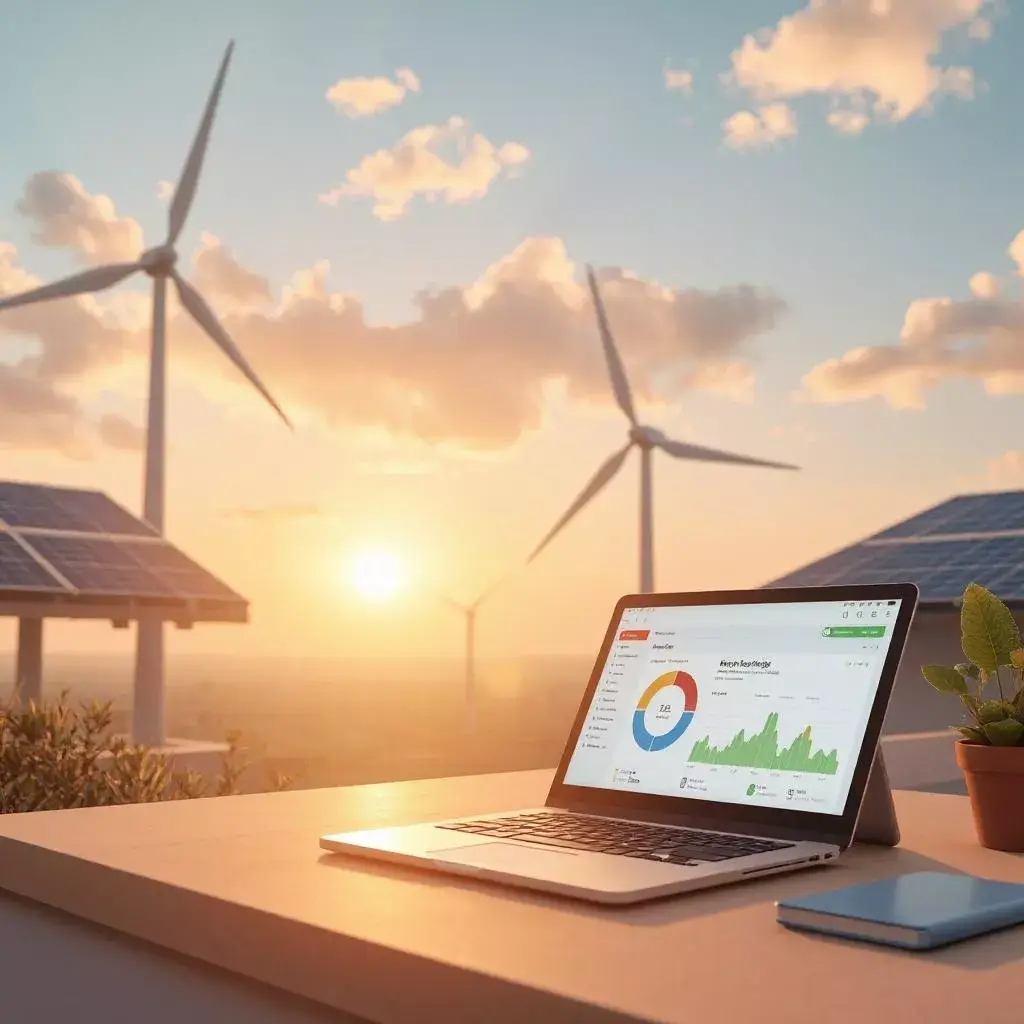1. Introduction
- In today's technology-driven world, digital devices and online activities consume a significant amount of energy. As the demand for digital services grows, so does the importance of using renewable energy sources to power our devices, data centers, and internet infrastructure.
- This article explores the impact of renewable energy on digital life, how individuals can support the transition, and the benefits of adopting cleaner energy solutions.
2. The Growing Energy Demand of the Digital World
Increase in Device Usage: The rise of smartphones, laptops, and smart home devices has led to higher energy consumption.
Cloud Computing and Data Centers: Data centers power websites, cloud storage, and streaming services, requiring enormous electricity.
Cryptocurrency and Blockchain: Mining digital currencies consumes vast amounts of energy.
Internet Infrastructure: Network operations, including 5G and fiber optics, require constant power.
E-Waste and Energy Impact: Discarded devices contribute to energy waste and environmental pollution.
3. How Renewable Energy Powers Digital Infrastructure
Solar-Powered Data Centers: Many tech giants, like Google and Apple, use solar energy to run their data centers.
Wind Energy for Cloud Computing: Amazon Web Services and Microsoft Azure integrate wind power for their cloud services.
Hydroelectric-Powered Facilities: Data centers in regions with abundant hydro energy benefit from cleaner electricity.
Geothermal Energy for Server Farms: Some tech companies use geothermal power to regulate server temperatures efficiently.
Green Energy Certifications: Companies investing in renewable energy credits (RECs) to offset carbon emissions.
4. How Your Personal Devices Can Run on Renewable Energy
Solar-Powered Chargers: Portable solar chargers for phones, tablets, and laptops reduce reliance on traditional electricity.
Smart Grids and Home Energy Storage: Using home solar panels with battery storage for uninterrupted power supply.
Energy-Efficient Devices: Choosing ENERGY STAR-rated devices minimizes power consumption.
Renewable Energy Subscription Plans: Some utility providers offer green energy plans for households.
USB and Solar Hybrid Charging: Charging accessories powered by solar energy for gadgets and wearables.
5. Companies Leading the Renewable Energy Transition
| Company | Renewable Energy Initiative | Impact |
| 100% renewable-powered data centers | Reduces carbon footprint from searches & cloud storage | |
| Apple | Solar & wind-powered facilities | Net zero carbon commitment by 2030 |
| Amazon | Wind & solar farms for AWS | Supports global sustainability goals |
| Microsoft | Carbon-negative pledge | Aims to offset all emissions since founding |
| Tesla | Solar-powered battery storage | Promotes off-grid energy independence |
6. How Individuals Can Support Renewable Energy
Switch to Green Energy Providers: Opt for utility companies that use renewable sources.
Invest in Solar Panels: Reduce dependency on fossil-fuel-generated electricity.
Use Energy-Efficient Appliances: Lower your household power consumption.
Support Sustainable Tech Brands: Purchase from companies committed to clean energy.
Advocate for Green Policies: Encourage governments to invest in renewable energy.
7. The Environmental Benefits of Digital Renewable Energy
Lower Carbon Emissions: Reduces the footprint of online services and gadgets.
Less Reliance on Fossil Fuels: Decreases coal and oil consumption.
Sustainable Energy Future: Ensures long-term energy security.
Cleaner Air and Water: Reduces pollution from power plants.
Conserves Natural Resources: Promotes responsible energy use.
8. The Future of Renewable Energy in Technology
Advancements in Solar Tech: More efficient solar cells for smaller devices.
AI in Energy Optimization: Smart systems predicting and managing power usage.
Battery Innovations: Long-lasting energy storage solutions for renewable power.
Smart Homes Powered by Renewables: Automated energy-saving technologies.
Increased Corporate Commitments: More companies pledging net-zero emissions.
9. Challenges of Transitioning to Renewable Energy
High Initial Costs: Solar panels and storage solutions can be expensive.
Energy Storage Limitations: Efficient storage of renewable energy remains a challenge.
Infrastructure Adaptation: Some regions lack the facilities for renewable integration.
Intermittency Issues: Solar and wind energy depend on weather conditions.
Slow Policy Implementation: Government regulations may not support rapid transition.
10. Renewable Energy and Internet Usage
Eco-Friendly Web Hosting: Many companies now offer green hosting solutions.
Sustainable Streaming Services: Platforms optimizing energy use for lower impact.
Digital Minimalism: Reducing unnecessary online activity to cut power consumption.
Data Center Innovations: AI-driven cooling systems reduce energy waste.
Energy-Efficient Browsers and Apps: Software designed to consume less power.
11. Comparison of Renewable vs. Non-Renewable Energy in Digital Use
| Factor | Renewable Energy | Non-Renewable Energy |
| Sustainability | Infinite supply | Limited resources |
| Carbon Emissions | Low to none | High pollution levels |
| Cost Over Time | Decreases with adoption | Increasing fuel costs |
| Efficiency | Advancing rapidly | Dependent on fuel supply |
| Environmental Impact | Minimal | Severe pollution risks |
12. Smart Habits to Align Digital Life with Renewable Energy
Charge Devices During Solar Peak Hours: Utilize sunlight efficiently.
Use Energy-Saving Modes: Reduce unnecessary power draw on devices.
Limit Background App Activity: Minimize wasted digital energy use.
Choose Green Web Services: Opt for platforms running on renewables.
Turn Off Unused Devices: Avoid phantom power consumption.
13. Encouraging Policy Changes for Renewable Digital Energy
Government Incentives: Tax credits and subsidies for renewable investments.
Corporate Responsibility: Tech companies committing to 100% green energy.
Public Awareness Campaigns: Educating consumers about energy choices.
Infrastructure Development: Expansion of renewable power grids.
Carbon Taxation: Encouraging businesses to switch to clean energy.
14. Conclusion
Renewable energy is playing a crucial role in transforming our digital lives. From powering data centers to enabling sustainable device usage, the shift toward green energy benefits both the environment and consumers. By making conscious choices, such as using solar-powered chargers, supporting green tech companies, and advocating for policy changes, individuals can contribute to a cleaner and more sustainable digital future.
Disclaimers
The impact of renewable energy adoption varies based on geographical location and energy providers.
Energy savings depend on user behavior, device efficiency, and local grid infrastructure.
Some renewable energy solutions may require initial investments for long-term benefits.
Policy changes and corporate commitments mentioned are subject to future updates.
Renewable energy’s reliability depends on advancements in storage and distribution technologies.
Author: Dipika Kumari
Publication Date: 27-03-2025
Email: [email protected]
